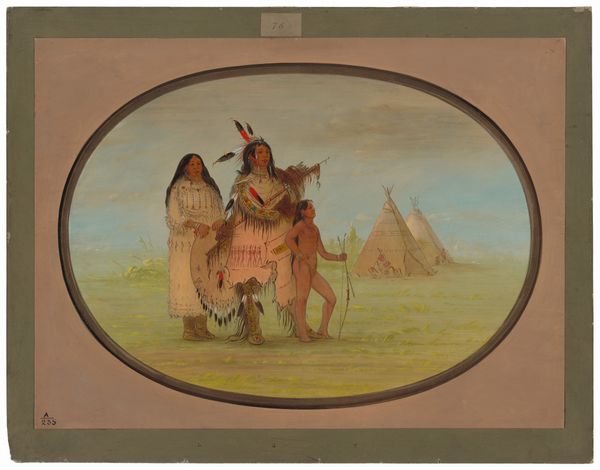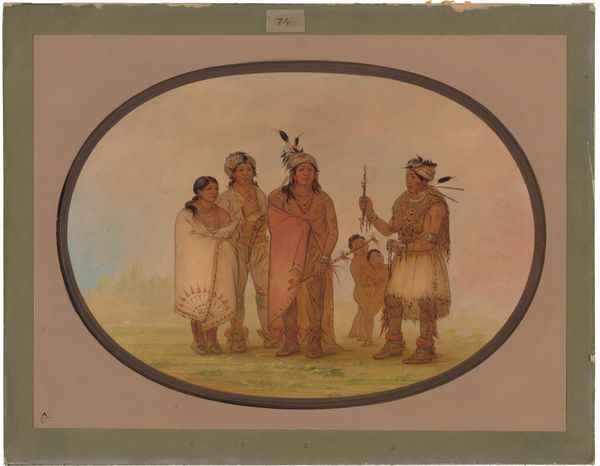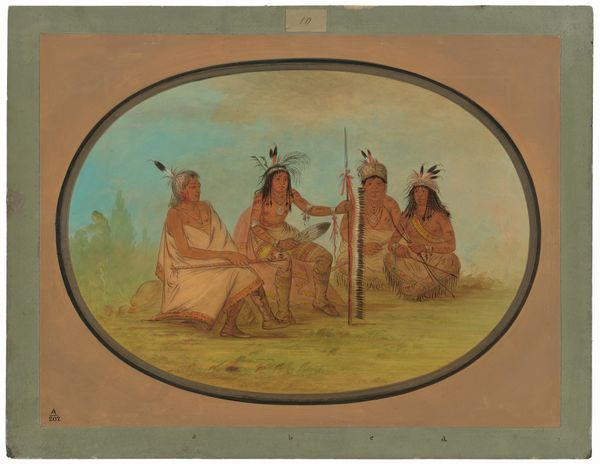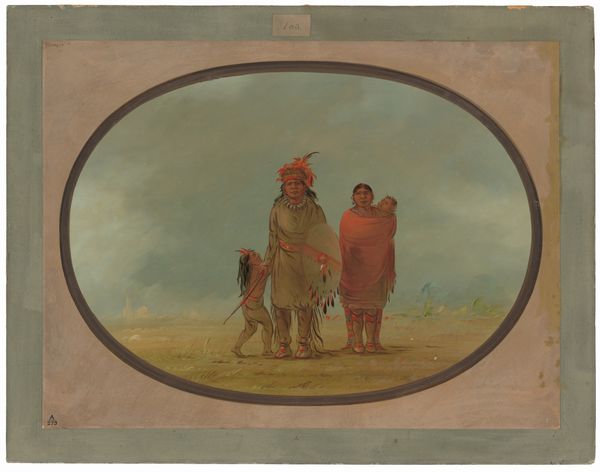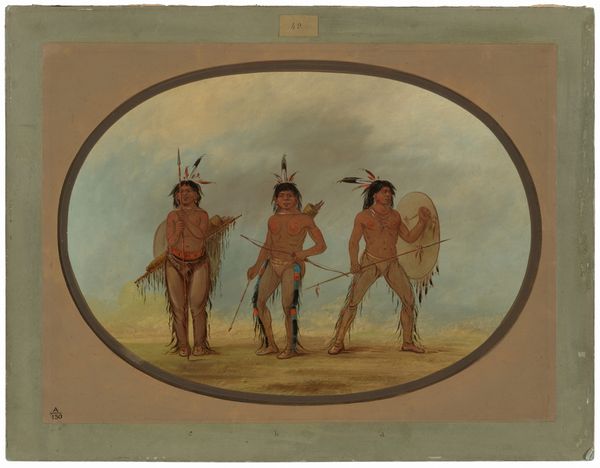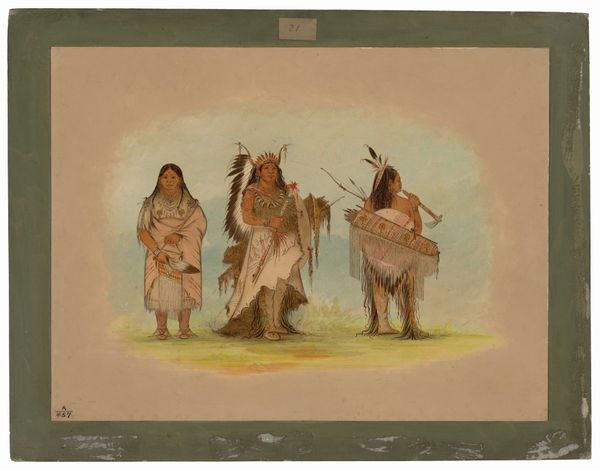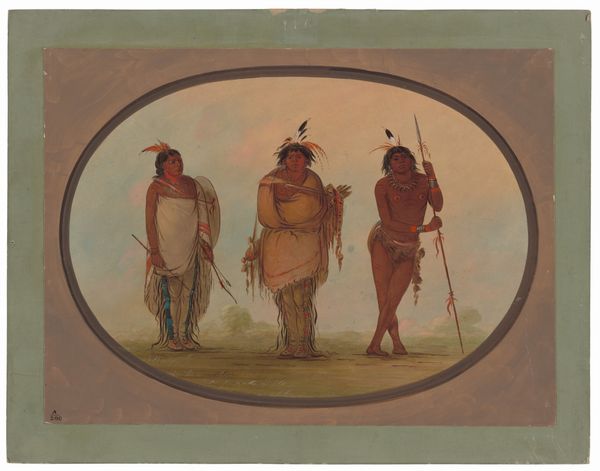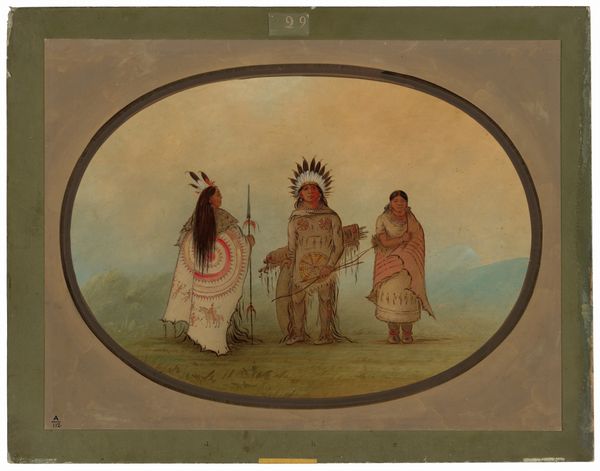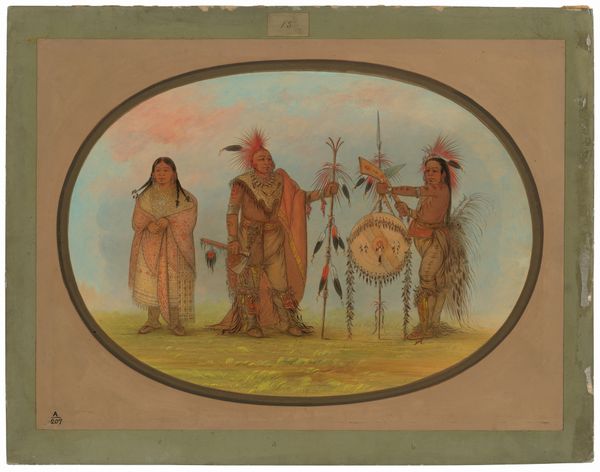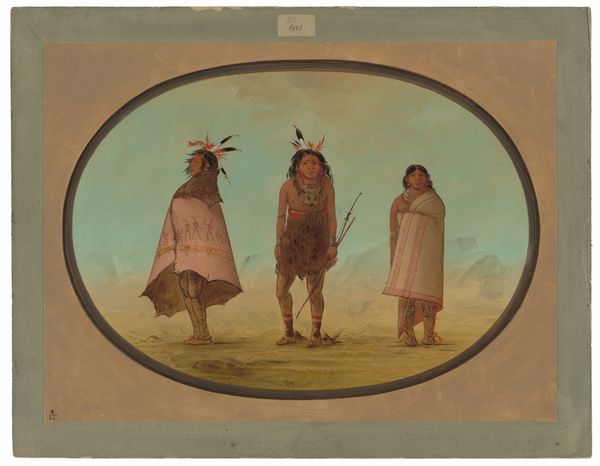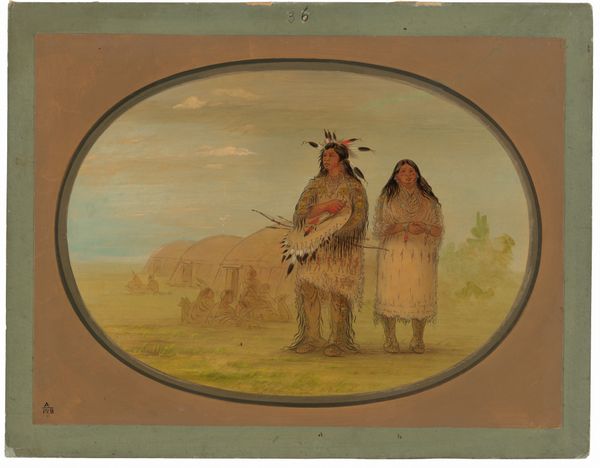
gouache
#
portrait
#
water colours
#
gouache
#
watercolor
Dimensions: overall: 47.6 x 64 cm (18 3/4 x 25 3/16 in.)
Copyright: National Gallery of Art: CC0 1.0
Curator: Before us, we have George Catlin's "Osage Chief with Two Warriors," created sometime between 1861 and 1869 using watercolors. Editor: My initial impression is one of restrained formality. The subjects are centered, posed almost like statuary. The muted watercolor palette and oval frame lend it a somewhat academic air, despite its subject matter. Curator: Indeed. Catlin was keen to document the lives and customs of Native American tribes. His project involved traveling and producing artwork to depict leaders, daily life, and significant ceremonies. The choice of watercolor allowed for relatively quick production in the field, which also speaks to the portability necessary for an artist on the move during this time. Editor: And the oval format, of course, was a popular framing convention then. But within that frame, consider the compositional elements. The careful arrangement of figures and objects suggests an effort to represent the status of each person through the objects held and adorned. Curator: Absolutely. Each element carries significance. The tomahawks they carry, the detailing of their attire; these are markers of material culture embedded in specific social and economic relationships. Also, let's remember Catlin's work was not simply an exercise in observation. It had a particular function: to promote knowledge about these tribes and perhaps advocate for their treatment as subjects for painting. Editor: And let's consider Catlin's technique itself. His use of watercolor emphasizes the ephemerality and precariousness of the moment being depicted. Are the pale tones used a representational attempt, or is it an intentional style for his European audiences? How would a formal assessment intersect with an understanding of Catlin’s historical context? Curator: Well, examining these colors gives insight into available materials and the standardization of pigments in 19th-century trade and exchange with the Osage nation. Consider how paintings like this participated in and potentially perpetuated Western viewpoints on the ‘other’. Editor: By decoding Catlin's choices we can better interpret what this painting shows, what it elides, and how it functions aesthetically, historically, and materially. It gives insight into culture during times of extreme pressure, both for Catlin and for his Osage subjects. Curator: True, these layered considerations highlight the complex interactions embodied in what initially might seem a straightforward historical portrait.
Comments
No comments
Be the first to comment and join the conversation on the ultimate creative platform.
